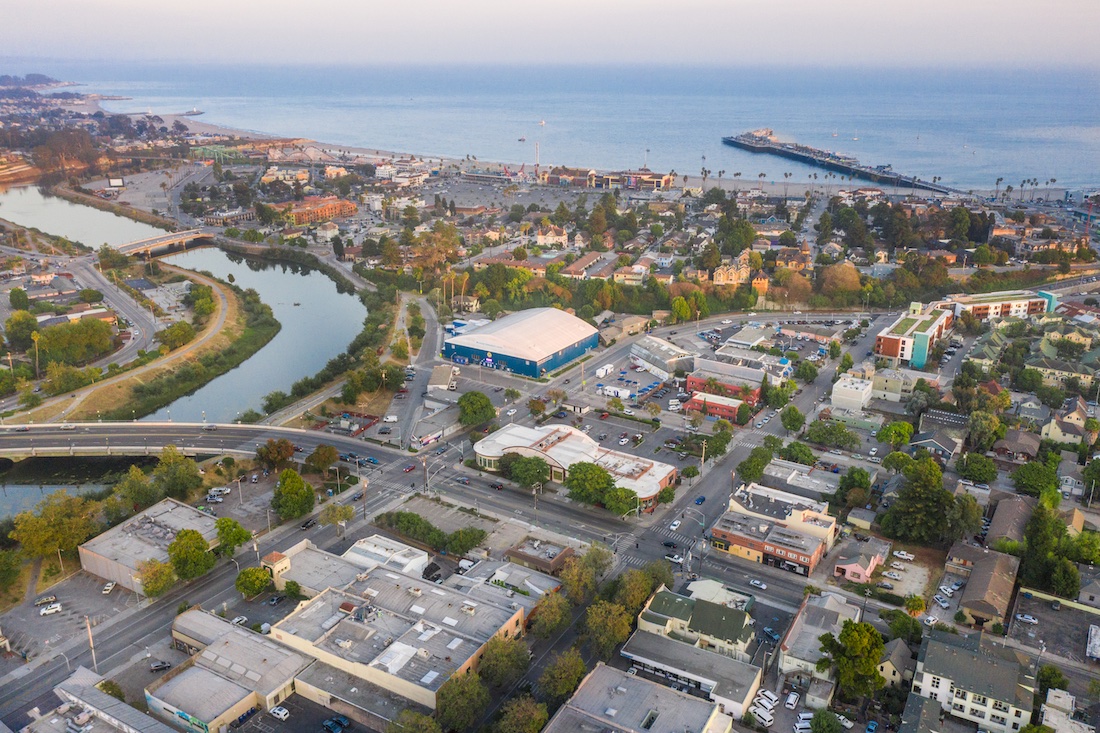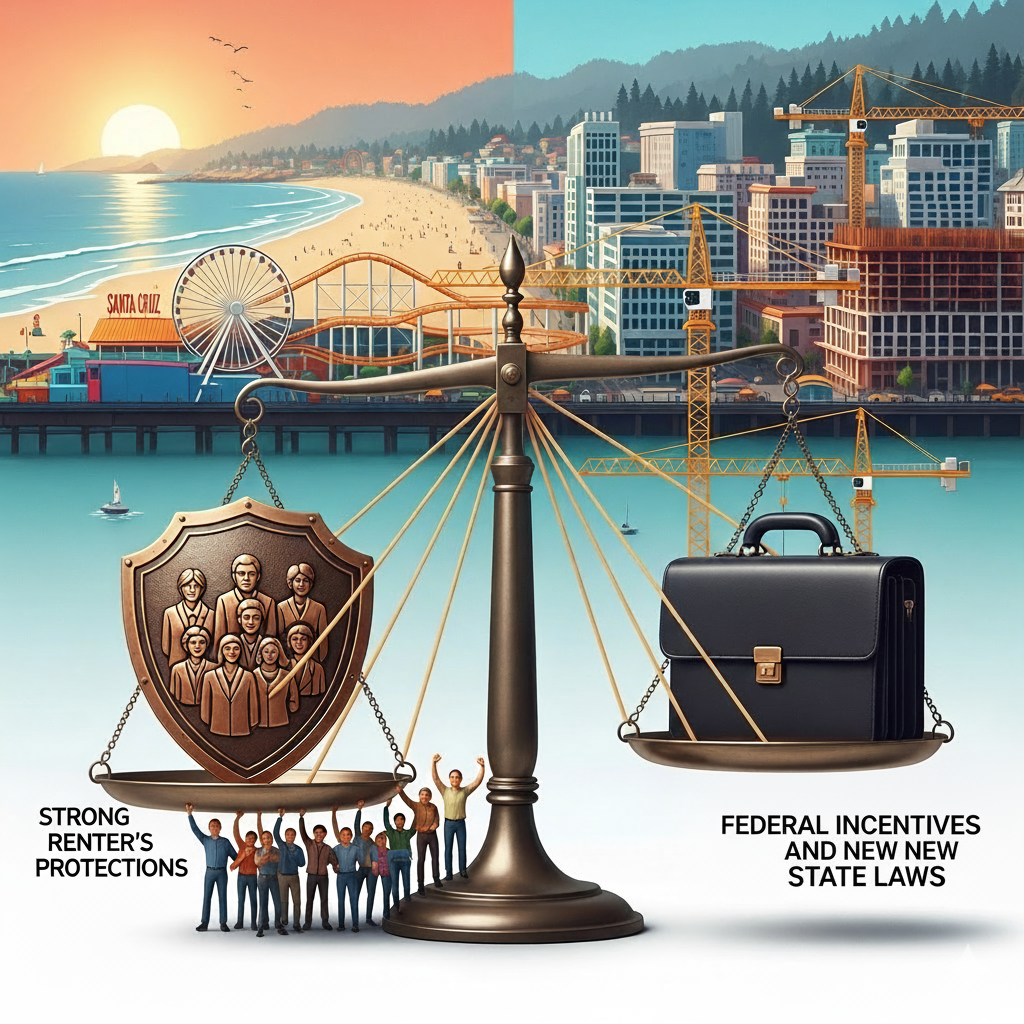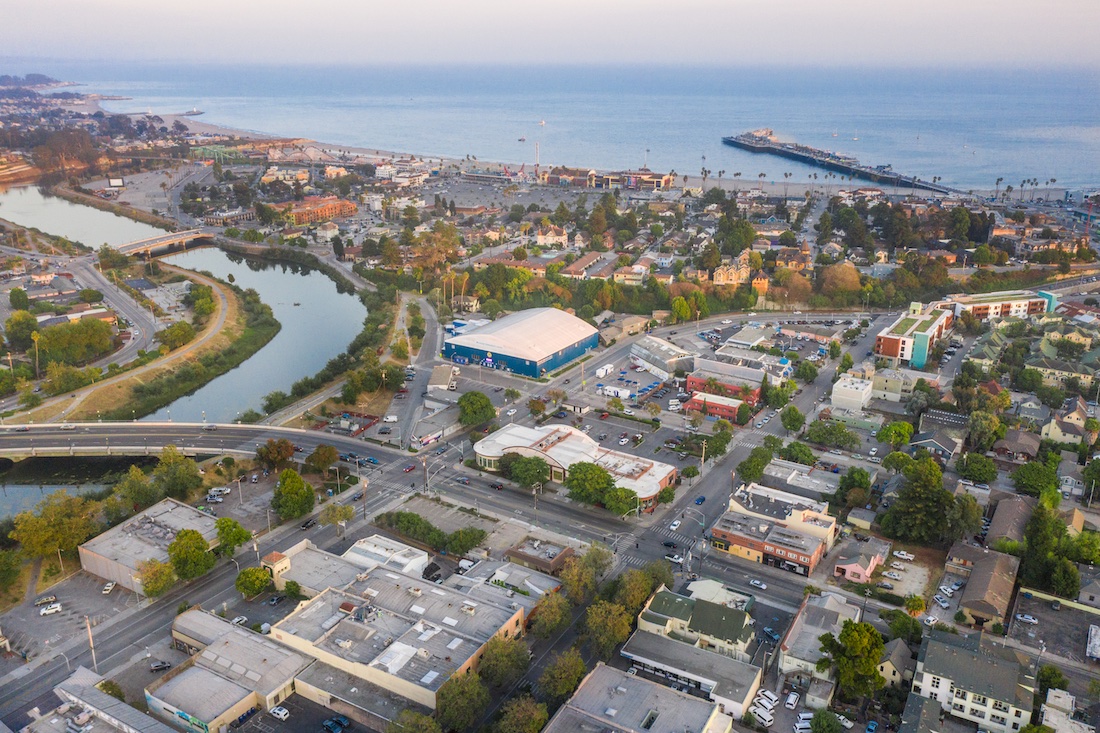Santa Cruz is no stranger to change. Our coastal community—where the surf meets redwoods and UC Santa Cruz drives a steady demand for housing—has always balanced two forces: preserving its laid-back charm and adapting to waves of economic, demographic, and policy shifts. In 2025, the balance tips again.
Inside this Article:

2025: A Landmark Year for Housing and Investment
If you’re renting in Santa Cruz, you’ve probably felt it: the rules have often seemed stacked against you. Sky-high rents, surprise fees, or vague lease terms can make renting feel like a gamble. But California’s new 2025 rental laws are shaking things up—and they’re all about leveling the playing field. Here’s the deal: these laws aim to cut disputes, tame wild rent hikes, and make the rental process crystal clear.
On the flip side, federal tax reforms are rolling out, and they’re a huge deal for property owners. The OBBBA tax reforms are a clear signal from Washington that they want to encourage development and investment. These policies make it easier for owners to reinvest in their properties and build new housing. It’s a powerful incentive to fix up an older building or fund new construction.
So, what's the big picture?
It's a balancing act. The new state laws are giving tenants a stronger voice, while the federal tax changes are giving investors a reason to grow their portfolios.
California’s 2025 Rental Laws: Tenant Protections & Landlord Responsibilities
California’s new housing laws focus on transparency, documentation, and affordability. Here are the highlights:
1. AB 2493 – Rental Application Fees
The rental scene in California has always been a competitive one. The coastal lifestyle, the university, the demand—it all adds up to a market where securing a place can be a battle. And for tenants, that battle often comes with a financial cost: a stack of non-refundable screening fees.
But a new law is here to change that.
Starting January 1, 2025, California's Assembly Bill 2493 (AB 2493) brings new rules for how landlords handle these fees. The goal is simple: more transparency and fairness. For everyone in the Santa Cruz rental ecosystem—from property managers to students to families—this is a game-changer.
The law gives landlords two options for charging fees:
- Sequential Application Process: You can only charge a screening fee when you're ready to review an application, processing them one by one.
- Refundable Screening Fee Process: You can review multiple applications, but you must refund the fee to any applicant you don’t select.
Why this matters for Santa Cruz is simple. In a high-demand area where a single open house can draw dozens of hopeful renters, this law prevents the old practice of collecting dozens of non-refundable fees for a single unit. It gives tenants a fair shot and reduces the financial burden of searching for a home.
2. AB 2747: The New Law Allowing Rent Payments to Build Credit
Starting April 1, 2025, a new California law—Assembly Bill 2747 (AB 2747)—changes the way rental housing interacts with the financial system. Landlords of larger residential properties (15+ units) or properties owned by corporations, LLCs with corporate members, or REITs must now give tenants the option to report on-time rent payments to at least one major credit bureau like Experian, Equifax, or TransUnion.
This means something simple but powerful: renters can finally use their largest monthly expense—rent—to build a stronger credit profile.
How It Works for New and Existing Leases
- New leases (signed April 1, 2025 or later): Landlords must present the credit-reporting option at lease signing and remind tenants every year.
- Existing leases (as of January 1, 2025): Landlords must make the option available by April 1, 2025, and continue to offer annual reminders.
- Cost to tenants: If a tenant opts in, landlords can charge up to $10/month or the actual reporting cost (whichever is lower). If reporting is free, no fee applies.
It’s worth noting: while this law is designed to highlight on-time payments, opting in may also allow late payments to be reported, which could hurt credit.
Why It Matters for Renters
For years, only tenants in assisted housing developments had this benefit under older laws like SB 1157. Now, AB 2747 expands access, creating opportunities for renters across California—especially those without traditional credit histories—to:
- Improve their credit scores
- Qualify for better loan rates
- Lay the groundwork for future homeownership
In a state where affordability is one of the biggest barriers to buying a home, this law offers renters a new financial stepping stone.
Tip For Landlords: If you own or manage qualifying rental properties:
- Add this option to all new lease agreements.
- Provide annual reminders going forward.
3. AB 846 – Rent Control and Affordable Housing Caps
If you’re renting in Santa Cruz, you’ve felt the pinch. Rents have been climbing faster than a wave at Steamer Lane. But here’s some good news: Assembly Bill 846 (AB 846) is stepping in to ease the pressure. Signed into law and kicking in June 2025, this bill caps rent increases for state-funded affordable housing.
Starting June 2025, AB 846 limits rent increases for state-funded affordable housing to the lower of:
- 5% plus the annual change in the CPI (Consumer Price Index), or
- A maximum of 10%.
Here’s what that means: if the CPI (a measure of inflation) jumps by 3%, your rent can go up by 8% at most (5% + 3%). If inflation spikes higher, you’re still capped at 10%. No more stomach-dropping surprises when your lease renews.
This applies to LIHTC properties (Low Income Housing Tax Credit) —think affordable housing complexes often used by low-income families, students, or service workers. In Santa Cruz, where high rents can eat up half your paycheck, this cap offers predictability. You can budget without worrying about a sudden hike pricing you out of your home near Seabright or Westside.
4. AB 2801 – Security Deposit Documentation
If you’ve ever rented, you know the drill: handing over a hefty security deposit and crossing your fingers to get it back. Too often, it feels like a black box—vague claims about “damage” can leave you shortchanged. Enter AB 2801, a new California law that kicked in April 1, 2025.
According to this law, landlords must provide photographic evidence of your rental unit’s condition at three key moments:
- Before you move in: A baseline to show the unit’s starting condition.
- After you move out, before repairs: Proof of the unit’s state when you leave.
- After repairs are completed: Documentation of any work tied to deposit deductions.
This applies to all residential rentals, whether it’s a cozy Seabright apartment or a family home in Live Oak. Plus, landlords must offer a pre-move-out inspection to flag potential issues, giving renters a chance to fix things.
Santa Cruz’s rental market is intense, especially near UCSC or beachside spots like Westside. Here’s what AB 2801 means for you:
- More transparency
- Fewer disputes
- Proactive fixes
For example, if you’re renting a condo near Pacific Avenue, your landlord must send you a photo log before you move in and after you leave. If they claim you damaged the countertops, they’ll need to show the “before” and “after” to justify any deduction.
Tips for Renters
- Document everything: Take your own photos when you move in and out.
- Request the inspection: Use the pre-move-out walk-through to address issues early.
- Know your rights: Check AB 2801 details at leginfo.legislature.ca.gov to hold landlords accountable.
AB 2801 isn’t a magic wand, but it’s a solid step toward fairness. In a market as tough as Santa Cruz, that’s something to celebrate. Stay sharp, keep records, and you’ll have a better shot at getting your deposit back.

The OBBBA Tax Reforms: A New Era for Investors
California has some of the strongest renter’s protections in the nation, but the federal One Big Beautiful Bill Act (OBBBA) introduces sweeping tax reforms that tilt the scale back toward investors and developers. For Santa Cruz, this mix of state rules and federal incentives creates a unique push-and-pull dynamic—challenging in some ways, but also ripe with opportunity.
Below are five key tax changes and their potential impact on Santa Cruz’s rental and development market.
1. Permanent 100% Bonus Depreciation (Section 168(k))
The update: An investor can now expense the full cost of qualifying assets—like HVAC systems, lighting, carpeting, and land improvements—immediately. This applies to assets placed in service after January 19, 2025. For the first taxable year after that date, a transitional election offers a 40% bonus rate (or 60% for certain long-production assets and aircraft). Section 168(n) applies to qualified production property but only through 2030.
Santa Cruz impact: This means upgrades to rentals near UCSC or coastal commercial properties instantly become more tax-efficient. Pairing this with a cost segregation study can further accelerate savings.
Example: A landlord renovating a duplex for student housing can write off those improvements right away, freeing up cash flow for future projects.
2. Expanded Opportunity Zone (OZ) Program
The update: The Opportunity Zone program is now permanent, with new designations beginning in 2027. Investors still benefit from capital gains deferral, a 10% basis step-up after five years, and tax-free gains after 10 years. However, the old 5% extra exclusion for seven-year holds is eliminated for post-2026 investments. Rural OZ funds (QROFs) get an additional 30% gain exclusion.
Santa Cruz impact: With four designated OZs in Santa Cruz County (Pleasure Point, Live Oak, and two within the City of Santa Cruz—covering about 26,000 residents), investors can reinvest locally while gaining federal tax benefits. Rural zones nearby provide even stronger incentives.
This creates opportunities to:
- Revitalize downtown neighborhoods
- Develop affordable housing
- Align investments with Santa Cruz’s culture of sustainability and inclusivity
3. Enhanced Section 163(j) Interest Deduction
The update: The law restores the more favorable EBITDA-based formula for deducting interest expenses starting in 2025. From 2026 onward, Subpart F, GILTI, and Section 78 gross-up amounts are excluded from adjusted taxable income (ATI). Real estate businesses that opt out of Section 163(j) cannot use bonus depreciation.
Santa Cruz impact: High property values here often require heavy debt financing. From boutique hotels to multifamily rentals, this provision lets investors deduct more interest, improving project feasibility. The trade-off—losing bonus depreciation if electing out—will need careful consideration.
4. Expanded Completed Contract Method (CCM)
The update: A developer of residential projects (condos, apartments) can now defer income recognition until a project is completed, for contracts entered into after July 4, 2025. Older projects remain under the previous percentage-of-completion rules.
Santa Cruz impact: This reduces financial strain on multi-year projects, allowing tax obligations to better align with actual cash flow.
Examples of potential beneficiaries include:
5. Permanent Qualified Business Income (QBI) Deduction (Section 199A)
The update: Pass-through entities (LLCs, partnerships, S corps) retain a permanent 20% deduction on qualified business income. Income thresholds for phase-outs begin at $191,950 for singles in 2025 (adjusted annually).
Santa Cruz impact: Many local landlords already structure rentals through LLCs. With IRS safe harbor compliance, this deduction permanently reduces tax bills, boosting overall returns.
What This Means for Santa Cruz’s Rental Market
Together, California’s new rental laws and federal OBBBA tax reforms create a dual reality:
- For tenants: More stability and transparency. Rent increases are predictable, fees are capped, and deposits must be well-documented.
- For landlords: More compliance requirements—but also clarity that reduces disputes. Digitization (lease automation, photo documentation, online payments) will be essential.
- For investors and developers: Federal tax reforms create new incentives to reinvest in housing, especially in multifamily and community-driven projects.
Practical outcomes in Santa Cruz:
- Student rentals near UCSC: More structured lease terms, capped fees, and better documentation.
- Vacation rentals: Fewer disputes over deposits and clearer contracts.
- Downtown multifamily developments: Tax deferrals and bonus depreciation free capital for projects like the revived Ocean Street apartments or Cienega Heights’ 80 affordable homes.
- Affordable housing: Rent caps support accessibility for families and local workers.
Bottom line
These law reforms create powerful state and federal incentives that could transform Santa Cruz’s housing market. Combined with California’s strong tenant protections, the next few years may see more structured rentals, new affordable housing developments, and smarter reinvestment strategies across the county.
As your local real estate consultant, I believe these changes represent not just challenges, but opportunities—to create a rental market that’s more transparent, more sustainable, and more aligned with the cooperative spirit that makes Santa Cruz special.
The tide is rising. The question is: how will you ride the wave in 2026 and beyond?
Maximizing Your Investment Returns with Paul Burrowes in Santa Cruz
Paul Burrowes, CRS, CCEC, SFR, NHCP, LHC, REALTOR® Licensed REALTOR® with over 15 years of experience and expertise. Commits to being on time and transparent. Acts as your consultant to ensure you make the best decisions to fit your transaction at every step in the process. Negotiates towards a low-stress, win-win outcome. Handles all the details for you, ensuring the hundreds of steps in your real estate transaction go smoothly. Proudly serving Silicon Valley, Santa Cruz, Monterey, and Santa Clara Counties! | DRE# 01955563 | (831) 295-5130 | paul@burrowes.com.
Posted by Paul Burrowes on

Leave A Comment